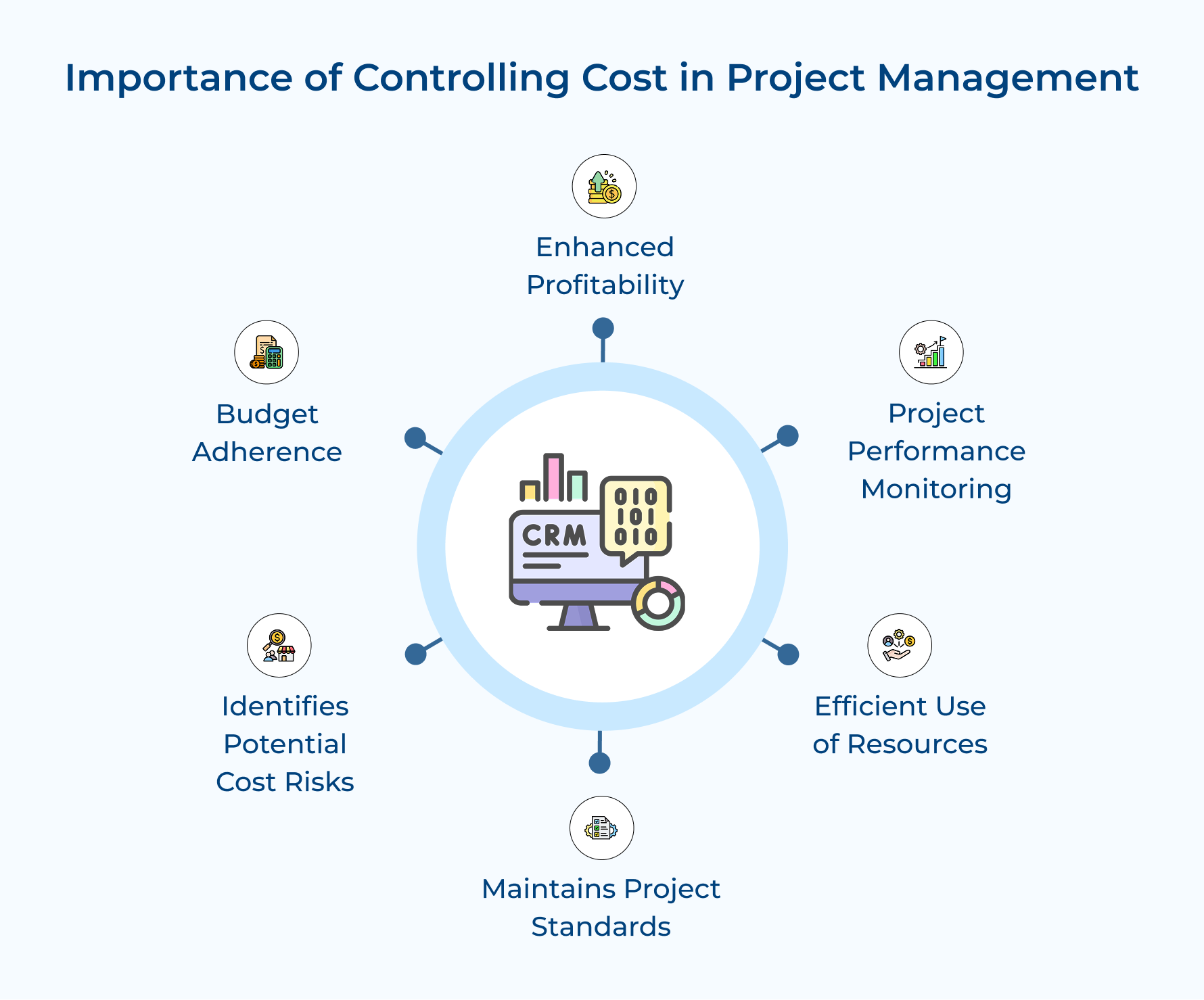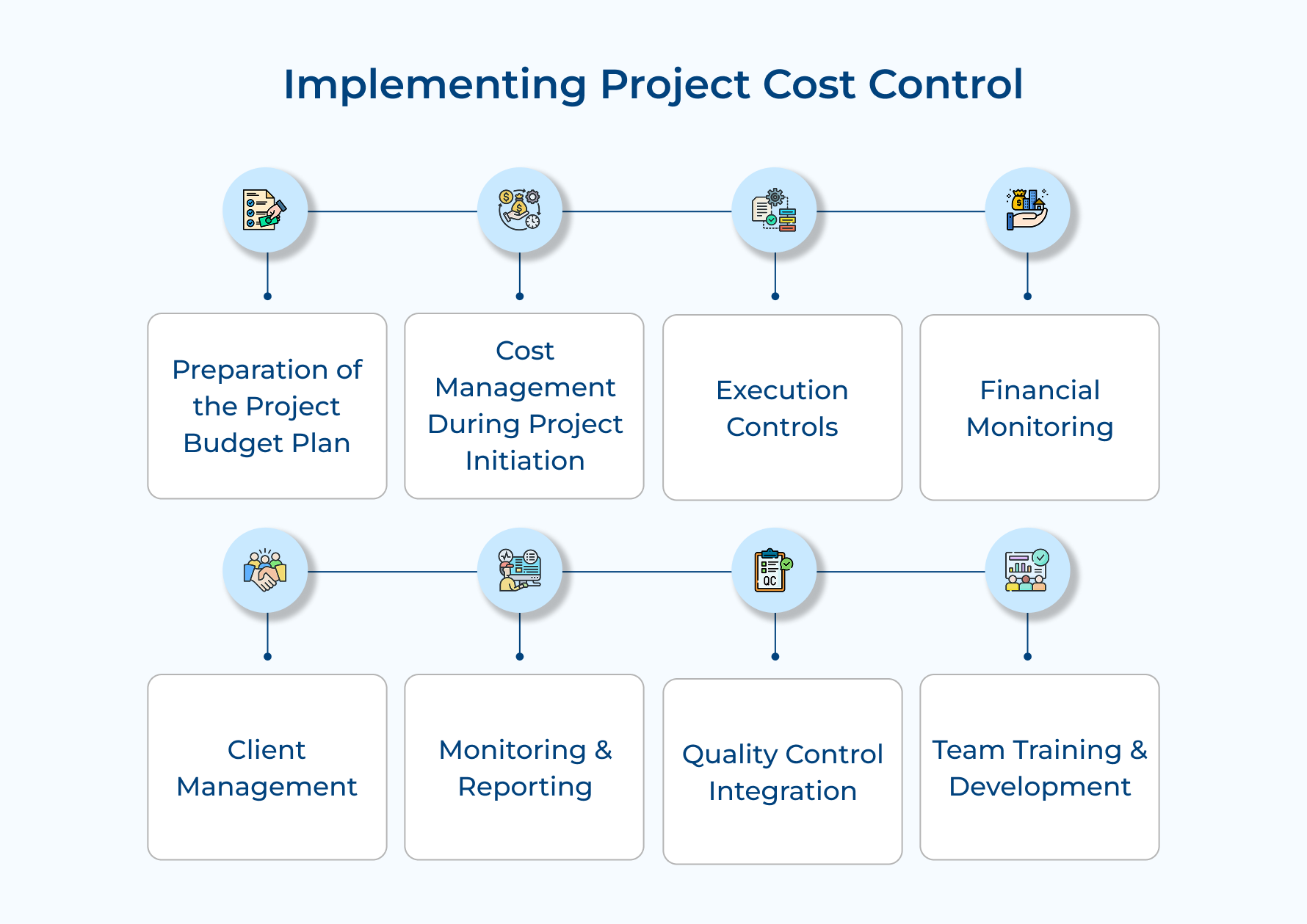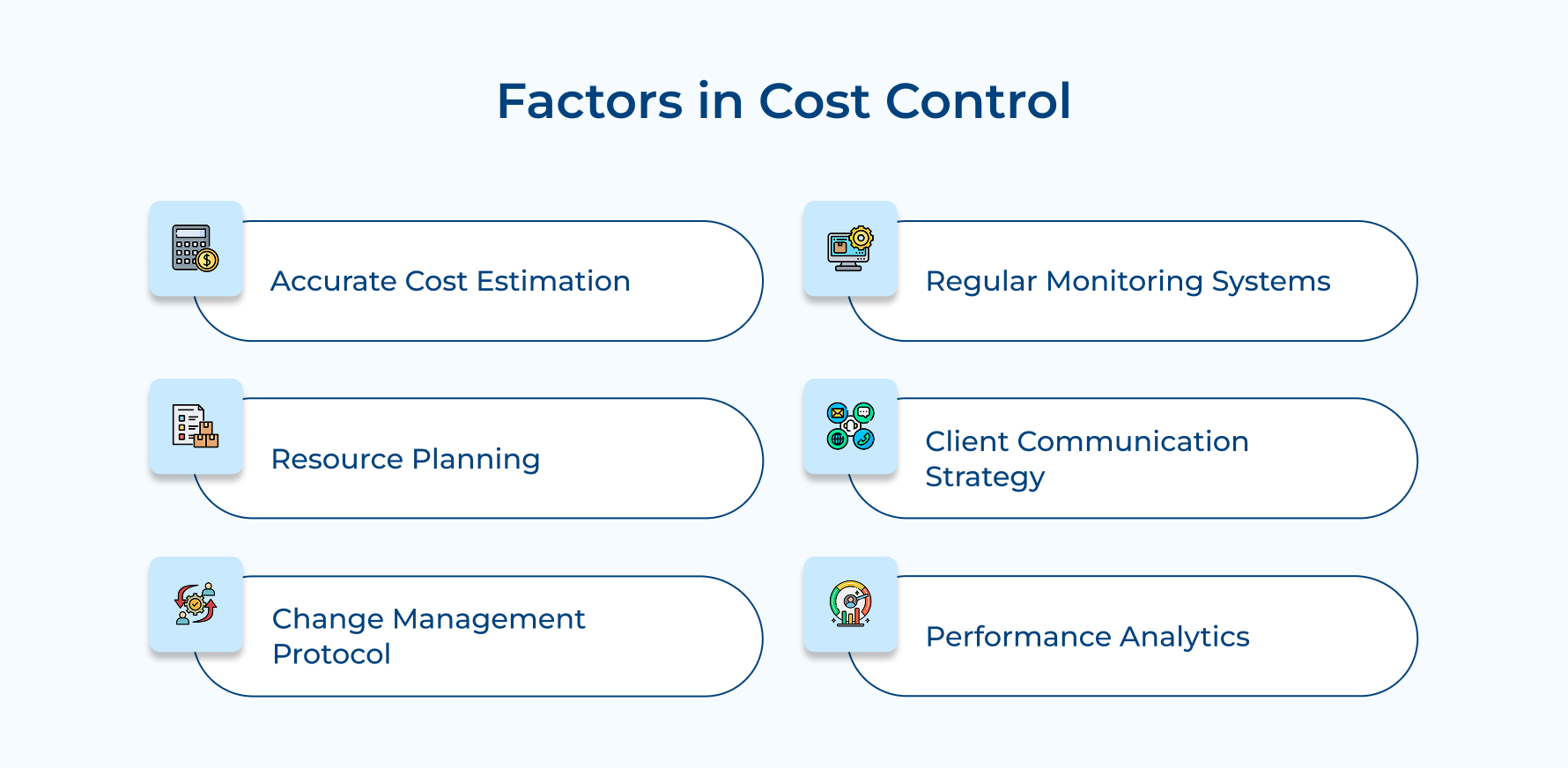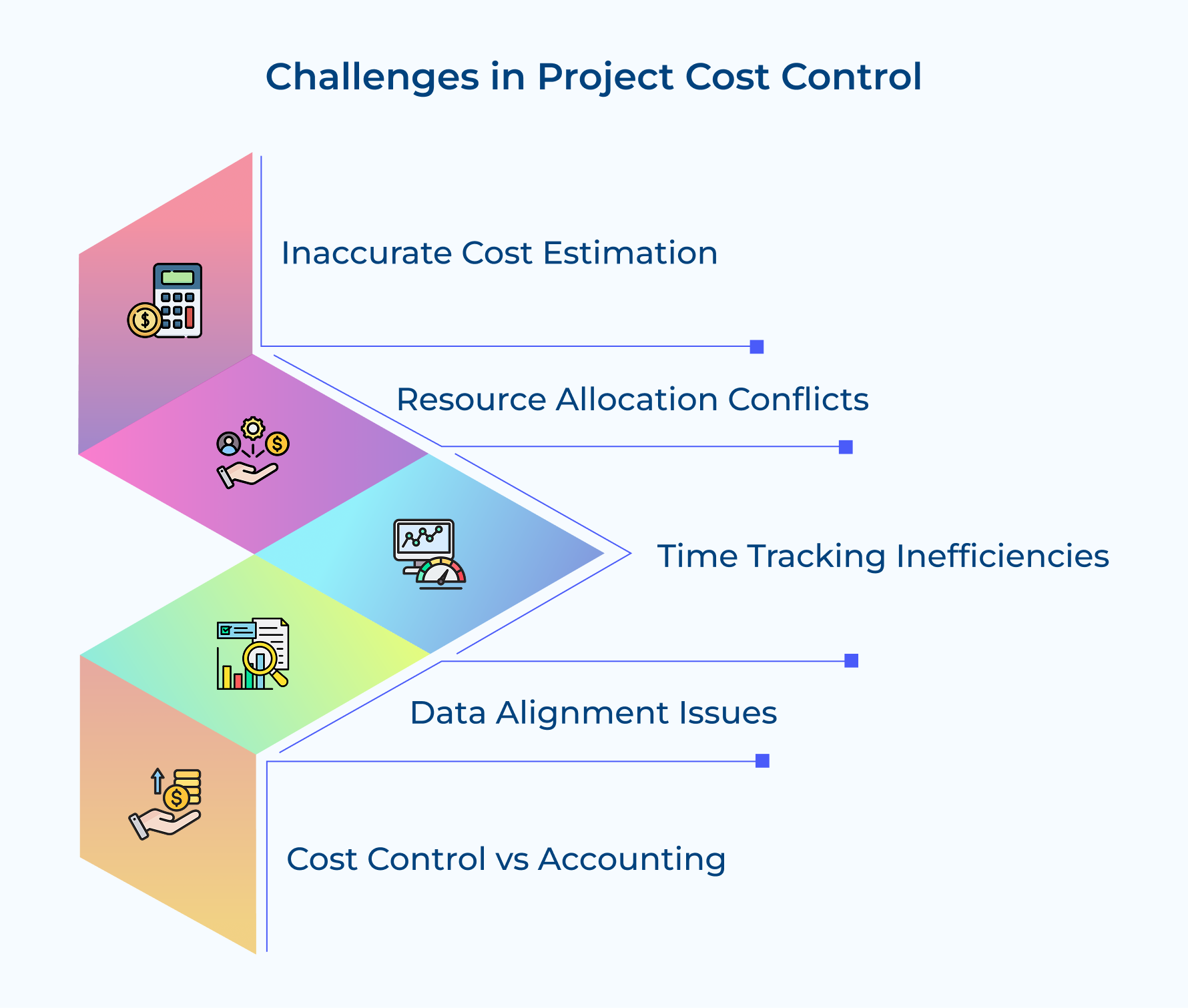What is Project Cost Control and How to Implement it?
- What is Project Cost Control?
- Importance of Controlling Cost in Project Management
- How to Implement Project Cost Control
- Key Factors in Cost Control for Project Management
- What Are The Project Cost Control Techniques?
- Common Challenges of Cost Control in Project Management
- Mastering Project Cost Control for Professional Success
- FAQs about Project Cost Control
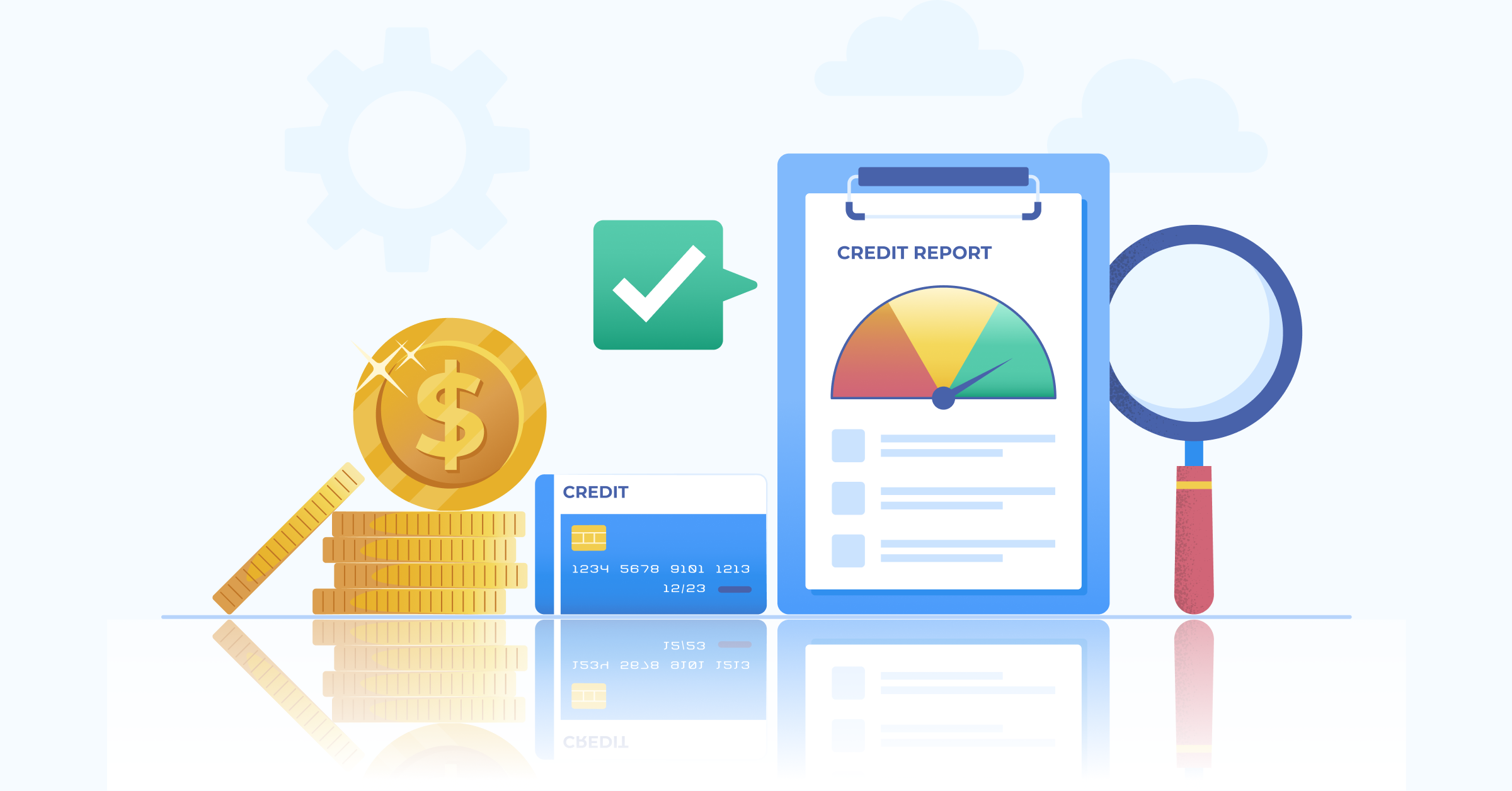
Key Highlights:
- Centralized management and flexible staffing ensure optimal resource utilization without conflicts or overruns.
- Integrated systems track expenses, flag variances, and support informed decision-making for your project cost control.
- Align quality control with cost-saving measures to deliver exceptional results while maintaining profitability.
Managing budgets in project management can feel like walking a tightrope. Without the right strategies, it’s all too easy to fall into the trap of costly overruns and missed deadlines.
That’s where project cost control steps in. It’s all about keeping a close eye on expenses and making sure every dollar is spent wisely throughout the project lifecycle.
When you deliver projects on time and within budget, you’re not just ticking boxes—you’re building trust while paving the way for long-term partnerships.
Let’s dive into the essentials of project cost control, why it matters, and how it sets the foundation for successful outcomes, both now as well as in future projects.
What is Project Cost Control?
Project cost control refers to the systematic process of project management, monitoring, and managing project expenditures to ensure they align with the financial goals. It encompasses planning, estimating, and controlling costs throughout the project lifecycle, enabling organizations to maintain profitability while also delivering value to clients.
Robust project cost control methods enhance operational efficiency, reduce financial risks, and improve overall project performance. Such practices strengthen client relationships and build a reputation for reliability as well as accountability in service delivery.
Key objectives:
- Budget compliance: Ensuring that all project costs remain within the predefined budget, facilitating financial discipline and accountability.
- Real-time tracking: Continuously monitoring expenditures against the budget to identify variances promptly and make necessary adjustments.
- Resource optimization: Allocating financial and human resources effectively to maximize productivity as well as minimize waste throughout the project lifecycle.
Importance of Controlling Cost in Project Management
Keeping costs under control is a big deal in project management—it’s how you make sure you stay on budget and hit those financial goals. Let’s understand the importance of cost control in project management.
Budget adherence: Sticking to the budget is non-negotiable for professional firms. It’s about keeping costs in check while still hitting those profit targets. By setting clear financial benchmarks from the get-go and using smart project cost control techniques, you can stay on top of expenses while avoiding overruns that might hurt your reputation.
Enhanced profitability: Keeping an eye on costs isn’t just about saving money—it’s about boosting profits. When you manage resources wisely and spot cost-saving opportunities early, you can deliver great results without breaking the bank. That means happier clients and healthier profit margins for your business.
Project performance monitoring: Regularly tracking costs lets you see how the project is shaping up and pinpoint any inefficiencies. By analyzing where things aren’t adding up and making adjustments, you can keep everything on track with your budget, timelines, as well as client expectations.
Efficient use of resources: A good cost control process in project management ensures your team and materials are used where they’re needed most, without waste. Smart planning keeps projects running smoothly, and having a bit of flexibility helps you handle unexpected changes without throwing everything off balance.
Maintains project standards: Balancing quality with cost is key to meeting client expectations. By managing budgets wisely while ensuring quality checks at every step, you can deliver top-notch results while sticking to the financial plan—and that’s what keeps your reputation strong.
Identifies potential cost risks: Regular monitoring helps you spot financial risks before they become big problems. By planning as well as keeping communication open with stakeholders, you can tackle issues early, protect your bottom line, and keep your client’s trust intact.
How to Implement Project Cost Control
Keeping project costs under control doesn’t have to be overwhelming. Let’s explore some practical steps to help you stay on budget and deliver successful projects every time.
1. Preparation of the Project Budget Plan
A well-thought-out budget is the backbone of any successful project. It helps you price services fairly, allocate resources wisely, and set clear financial goals. Here’s how to create one that works:
Break down costs in detail:
- Include staff hours, resource needs, overheads, and profit margins.
- Use past project cost control examples for realistic estimates.
Use phased budgeting:
- Track costs at each project milestone.
- Stay flexible to adjust as things evolve.
How To Get It Right?
- Learn from the past: Review similar projects to spot cost trends and adjust for today’s market as well as project specifics.
- Use templates: Create standardized templates with automatic calculations for overheads and profit margins—saves time while also ensuring consistency.
- Involve stakeholders: Set up budget review checkpoints and get input from key team members to cover all bases.
2. Cost Management During Project Initiation
The initiation phase sets the tone for the entire project cost control process. It ensures,
- All stakeholders understand financial expectations
- Establishes control mechanisms
- Creates clear protocols for expense tracking and approval processes before work begins.
So, what should you do to smoothen the process?
- Implement kickoff meetings focused on budget review
- Establish expense approval workflows
- Set up project management tools
Define roles and responsibilities for financial oversight while creating communication channels for cost-related discussions. Do not forget to document all financial assumptions and constraints in writing with the client agreement.
3. Execution Controls
Execution controls keep daily activities on track with the planned budget. By managing scope creep, resource usage, and variable costs, they help professional service firms stay profitable while delivering on promises.
A good starting point is setting up time-tracking systems to monitor how team members are spending their hours. Pair this with regular checks to validate the data and ensure resources are being used effectively.
Keeping a close eye on actual costs versus budgeted amounts is also key to spotting any issues before they snowball.
Handling scope changes can be tricky, but having clear protocols makes it much easier. For example, setting up a change control board to review and approve modifications ensures that any adjustments don’t derail the budget.
4. Financial Monitoring
Continuous financial monitoring helps agencies identify variances early and take corrective action. It ensures projects remain profitable, resources are used efficiently, and potential issues are addressed before they impact project success.
Utilize project management software to track expenses, monitor staff utilization rates, and analyze cost performance metrics. Generate regular financial reports and conduct periodic reviews to assess project health.
How to keep things more effective?
- Schedule weekly financial health checks comparing actual versus planned expenditures.
- Maintain updated cost forecasts based on current project performance and remaining work.
- Set up automated alerts for budget threshold violations and unusual spending patterns.
5. Client Management
Effective client management ensures alignment on financial expectations and helps maintain strong relationships while managing project finances professionally.
These are a few steps on how you can manage clients most efficiently,
- Schedule regular budget review meetings with clients to discuss financial status and upcoming needs.
- Develop clear templates for communicating the cost implications of client requests or changes.
- Maintain detailed documentation of all client-approved financial decisions and changes as well as for additional costs.
6. Monitoring & Reporting
Regular monitoring and reporting provide visibility into project financial health as well as enable informed decision-making. It also helps maintain accountability across the project team and stakeholders.
Generate standardized reports showing budget status, cost variances, and forecasts. Conduct regular review meetings to discuss financial performance and necessary adjustments.
Actionable Tips:
- Create automated weekly reports showing key financial metrics and trend analysis.
- Implement a traffic light system for quick identification of cost-related issues.
- Maintain a central repository of all financial reports accessible to key stakeholders.
7. Quality Control Integration
Integration of quality control with cost management ensures that cost-saving measures don’t compromise deliverable quality. It helps maintain the right balance between efficiency and excellence in professional services.
Implement quality checkpoints aligned with budget milestones, monitor the impact of quality measures on costs, and maintain standards while optimizing resource usage.
Quick Tips:
- Develop quality metrics that align with cost control measures and track both simultaneously.
- Create feedback loops between quality assessments and cost management processes.
- Regular review of quality-cost relationships to identify optimization opportunities.
8. Team Training & Development
Well-trained teams are essential for effective cost control. Team members need to understand the financial implications of their work and be equipped with skills to manage costs effectively.
Provide regular training on cost management tools and techniques, and develop skills in financial analysis while creating awareness about the impact of daily decisions on project costs.
Conduct monthly training sessions on specific aspects of cost control and financial management. Create detailed guidelines and reference materials for common cost management scenarios. Implement mentoring programs pairing experienced staff with newer team members.
Key Factors in Cost Control for Project Management
Managing project costs can feel like juggling dozens of tasks, all at once! Let’s dive into the key factors that help you keep those costs in check.
Accurate cost estimation: For agencies, getting the numbers right from the start is key. By digging into past projects, industry standards, and market rates, they can craft realistic budgets that cover all the bases—both the obvious as well as hidden costs.
Resource planning: Smart resource planning is essential to keep things running smoothly across multiple projects. Strategically allocating people, tools, and materials ensures agencies optimize their billable hours as well as avoid conflicts, all while maintaining high-quality work.
Change management protocol: Changes are inevitable, but managing them well is crucial. A solid change control process helps agencies handle scope changes and their financial impact. It makes sure clients are on the same page, costs are assessed, and everything stays within budget.
Regular monitoring systems: Keep costs in check by staying on top of things with real-time tracking. Using tools to monitor actual spending versus planned budgets, and doing regular check-ins, helps catch any potential issues before they get out of hand.
Client communication strategy: Open communication is a must when it comes to project finances. Keeping clients informed about budget status, addressing any potential overruns early, and documenting decisions ensures transparency throughout the project.
Performance analytics: It’s all about looking at the numbers to stay ahead. Regularly reviewing key metrics—like billable hours, resource usage, and profit margins—lets agencies spot trends as well as find opportunities to improve their cost control strategies.
What Are The Project Cost Control Techniques?
Keeping project costs in line can be tricky, but the right techniques make all the difference. Let’s explore some of the most effective ways to manage and control project expenses.
Cost breakdown structure (CBS): Break down project costs into detailed, manageable components. Create hierarchical structures categorizing expenses like labor, materials, software licenses, and overhead costs. This helps track specific cost elements and identify where variances occur in professional service delivery.
Earned value management: Track project performance by comparing planned work against completed work and actual costs. Calculate key metrics like Cost Performance Index (CPI) and Schedule Performance Index (SPI) to assess project health as well as predict final costs for client deliverables.
Budget tracking systems: Implement digital tracking tools to monitor real-time expenses. Set up automated systems for expense reporting, time tracking, and budget alerts when spending approaches predetermined thresholds.
Milestone-based Payments: Structure project payments around specific deliverable milestones. Establish clear payment schedules aligned with project phases, ensuring steady cash flow while maintaining control over costs and client expectations throughout the project lifecycle.
Resource leveling: Optimize resource allocation to prevent overtime costs and burnout. Balance workload distribution across team members and projects, ensuring efficient utilization of billable hours while maintaining service quality standards.
Change control process: Implement formal procedures for managing scope changes and their financial impact. Document all change requests, assess cost implications, obtain necessary approvals, and update project budgets accordingly before proceeding with modifications.
Performance reviews: Conduct regular cost performance reviews and variance analysis. Compare actual expenses against budgeted amounts, identify trends, and implement corrective actions early to maintain project profitability along with client satisfaction.
Cost forecasting: Use historical data and current trends to predict future costs. Regularly update forecasts based on actual performance, market conditions, and changing project requirements to maintain accurate financial projections.
Common Challenges of Cost Control in Project Management
Cost control in projects comes with its own set of hurdles. Let’s unpack some common challenges that can throw budgets off track and how to tackle them!
Inaccurate cost estimation: Ever feel like your budget estimates just don’t hit the mark? Many agencies underestimate project costs, either due to a lack of data or by overlooking hidden expenses.
The fix? Use a structured process for estimating costs. Tap into data from similar past projects, industry benchmarks, and expert opinions. Build detailed templates that cover both direct and indirect costs, while including a buffer for uncertainties.
Resource allocation conflicts: Juggling limited resources across multiple projects can get messy, often leading to inefficiencies and budget overruns.
To tackle this, set up a centralized resource management system that gives you real-time insights into team availability and workloads. Create clear prioritization rules, establish protocols for sharing resources between teams, and adopt flexible staffing options to handle peak demand without overspending.
Time tracking inefficiencies: If tracking time is a hassle or gets delayed, it can throw off project costing and billing accuracy.
Solve this by using easy-to-use time-tracking tools that sync seamlessly with your project management software. Set clear daily time-entry guidelines, provide training for your team, and audit time logs periodically to ensure compliance.
Aligning data from multiple sources: Pulling financial data from different tools and departments can feel like piecing together a puzzle, often resulting in inconsistent reports.
Simplify this by implementing a system that integrates all your project management and financial data into one place. Standardize your reporting formats, set clear data entry rules, and use automation tools to keep everything synced as well as accurate.
Mistaking cost analysis for accounting: It’s easy to confuse project cost control with basic accounting, but this can mean missing out on valuable performance insights.
Fix this by clearly separating accounting from cost control. Use systems like earned value management (EVM), set up project-specific KPIs, and regularly review performance reports that go beyond just the numbers. Training your team in advanced cost control techniques will also make a big difference.
Mastering Project Cost Control for Professional Success
Project cost control remains a critical cornerstone of successful project management, especially for professional service firms and agencies. Effective implementation of cost control measures not only ensures project profitability but also builds long-term client trust and organizational sustainability.
The key to successful cost control lies in balancing multiple factors: accurate estimation, efficient resource allocation, systematic monitoring, and transparent stakeholder communication.
Organizations must remember that cost control is not merely about cutting expenses but about optimizing resource utilization and maximizing value delivery. As project environments become increasingly complex, mastering cost control techniques will remain essential for project success and business growth.
Limit time — not creativity
Everything you need for customer support, marketing & sales.
Neeti Singh is a passionate content writer at Kooper, where he transforms complex concepts into clear, engaging and actionable content. With a keen eye for detail and a love for technology, Tushar Joshi crafts blog posts, guides and articles that help readers navigate the fast-evolving world of software solutions.
